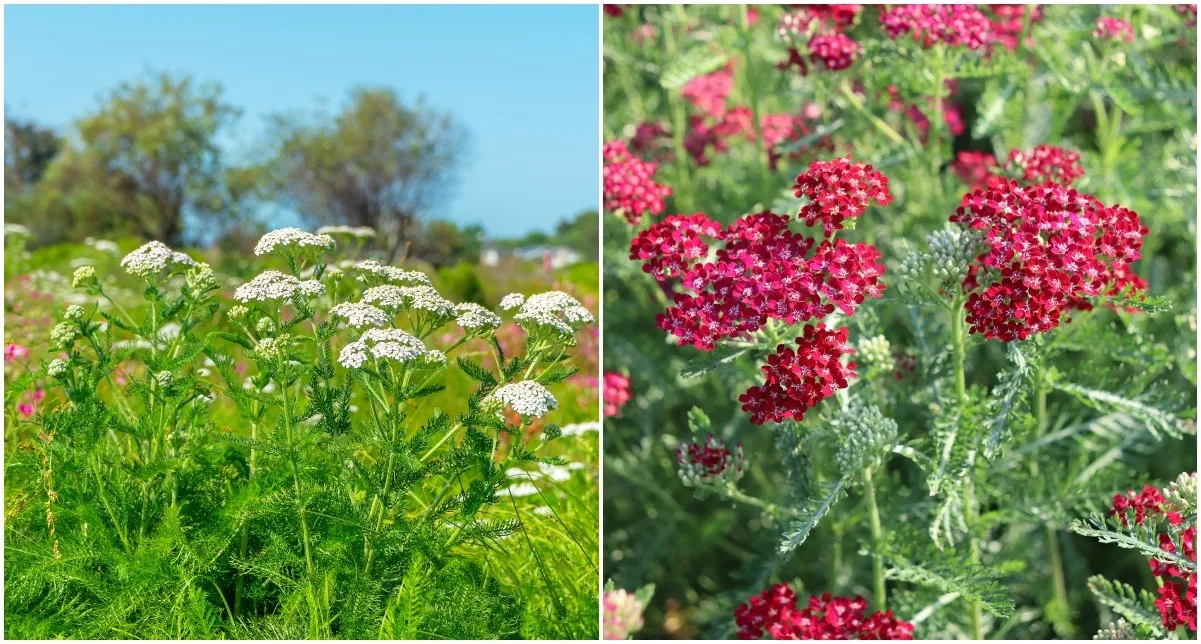
Yarrow is a fascinating plant with a long history of use as an herbal medicine. But yarrow cannot only heal you; it can also have a healing and nurturing effect on the ecosystem of your garden. The plant aids gardeners in maintaining good soil health and helps ensure you have plenty of garden wildlife. It’s a wonderful companion plant that can find a place in many gardens.
But what exactly is yarrow, why should we grow it, and how can we use it in our homes and gardens? Read on to find out more. By the end of this article, you will surely be considering growing it in your garden.
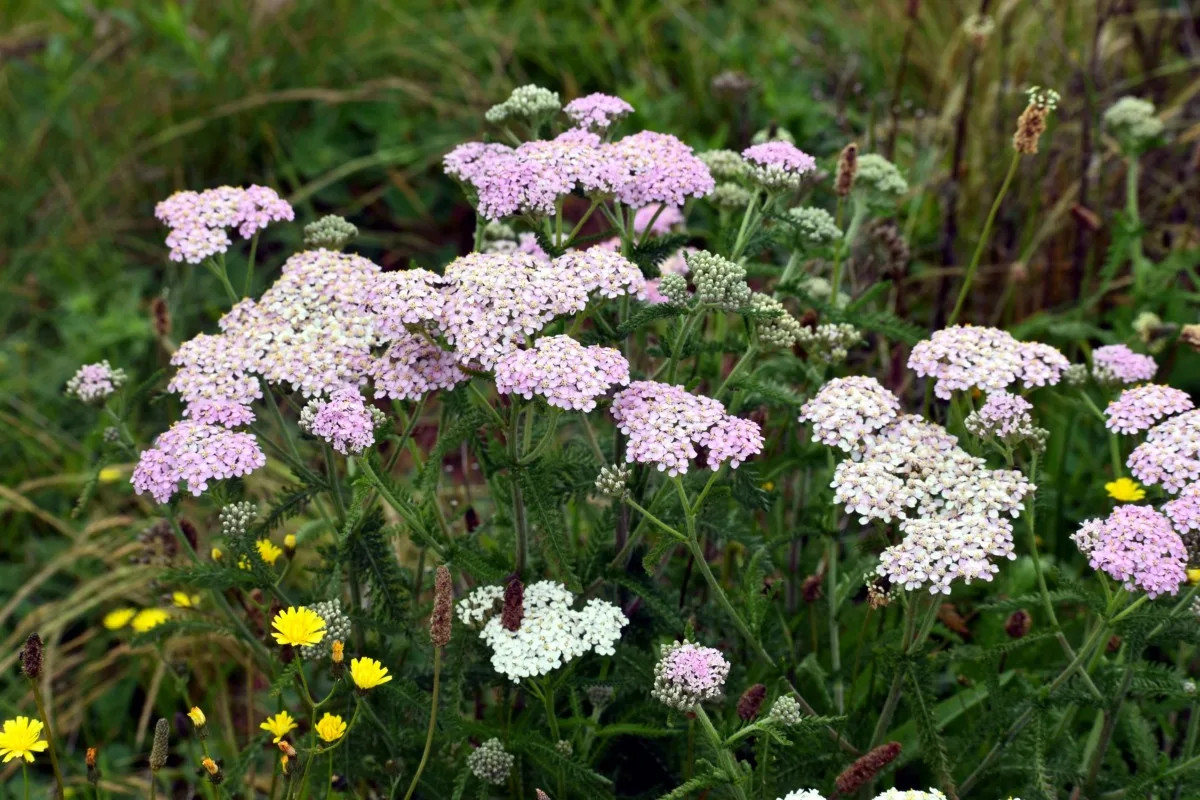
What is Yarrow?
Yarrow, Achillea millefolium is a herbaceous perennial plant. It produces several stems that are up to 1m in height, and has a spreading rhizomatous form of growth. The feathery leaves are arranged in spiral formation up the stems. The flowers are formed on inflorescences of disk-shaped small flowers that are white, ranging to pink. These flowers have a strong, sweet smell not dissimilar to chrysanthemums.
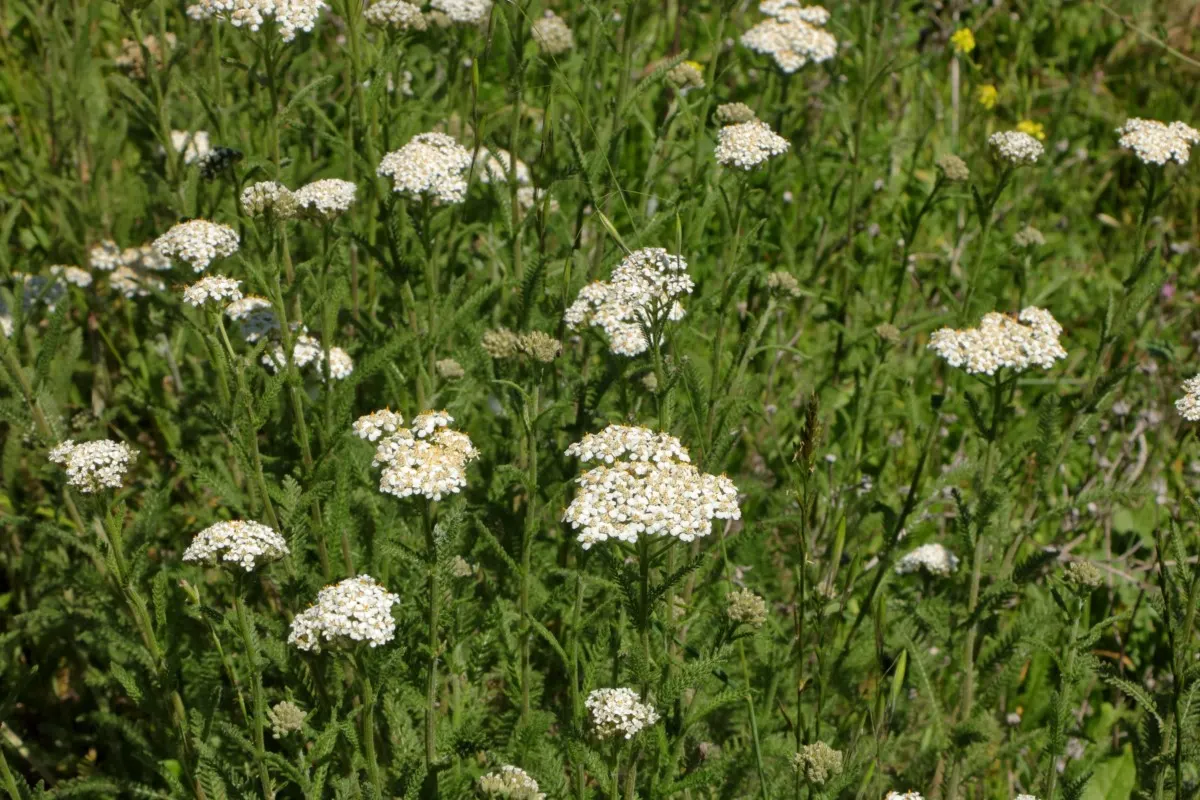
Yarrow is widespread in its native Eurasian range, and both native and introduced genotypes are found in North America. It commonly flowers between May and July and is very important in a range of grassland and open forest ecosystems.
How to Grow Yarrow
Yarrow can be propagated by seed in spring. Seeds require a germination temperature of 64-75 degrees F. They require light for germination, so optimal germination rates occur when seeds are sown no more than ¼ inch deep. Mature plants can also be propagated by division in the spring every other year.
To reach full maturity and size, yarrow plants should be placed around 12-18 inches apart. However, it can also be more closely planted to create ground cover in a lawn or under-storey.
While it’s also a wild plant in many regions, yarrow is also cultivated. A range of named cultivars are available. Some are grown primarily as ornamental cultivars, while others are, for example, particularly suitable for use as ‘lawn’ or ground cover.
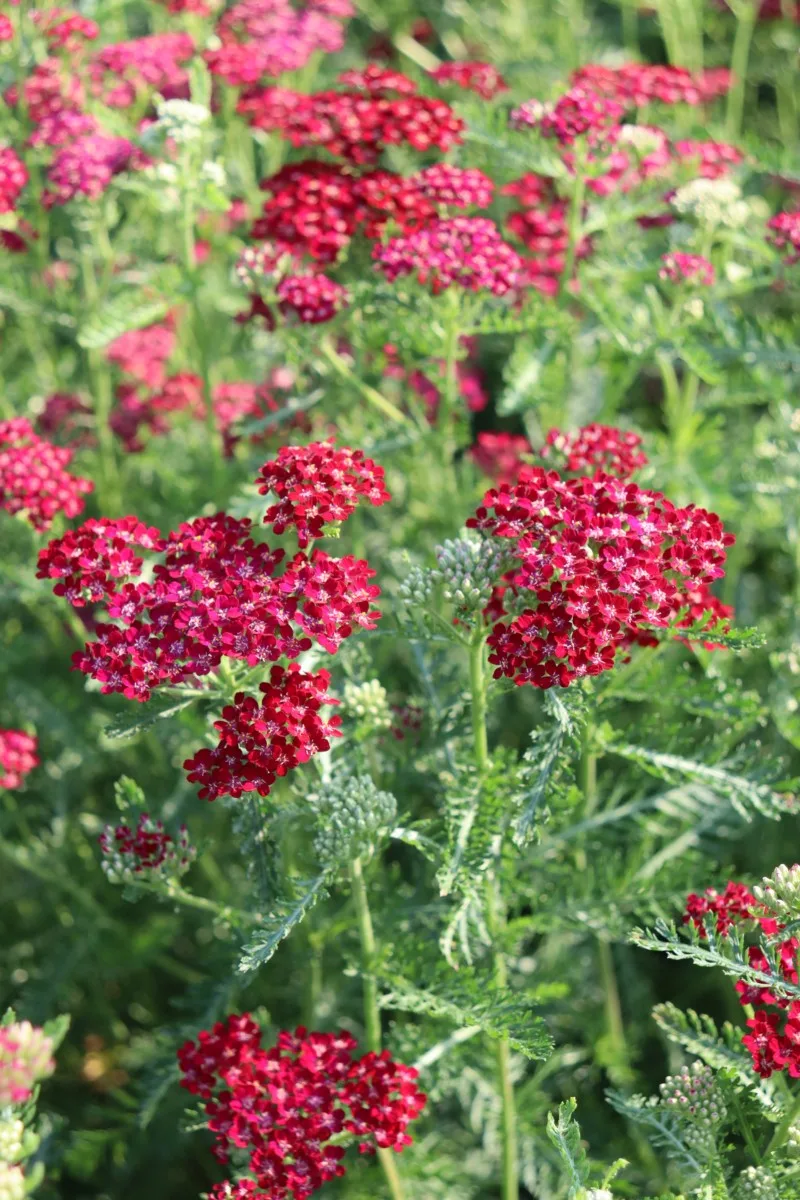
A few lovely examples are:
Why Grow Yarrow?
As you will discover below, yarrow is not only grown as an ornamental plant. There are also a wide range of other reasons to choose to grow it in your garden or on your property.
1. Yarrow is Believed to Be a Useful Dynamic Accumulator
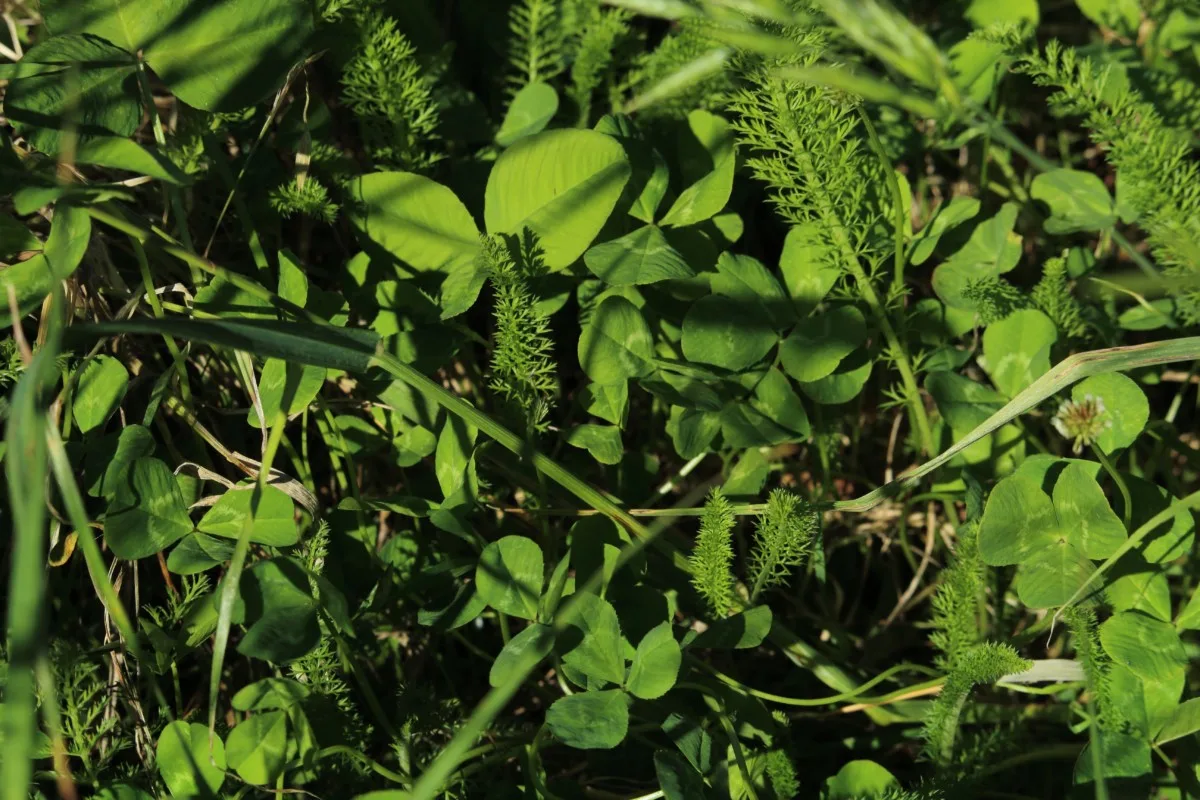
Yarrow is considered to be a particularly useful companion plant. One of the reasons for this is that it is believed to be a useful dynamic accumulator.
Yarrow has deep and fibrous roots which are said to be particularly effective at accumulating potassium, calcium and magnesium, and perhaps also phosphorus and copper. This means that these nutrients are not washed away or depleted through the soil but instead can be kept around to enrich your garden.
2. Add Fertility To Your Garden as Mulch
One of the ways to use dynamic accumulators like yarrow is to chop and drop them where they grow to immediately restore the nutrients to the soil system. As the yarrow breaks down, the nutrients it contains are returned to the soil, where they can be taken up by nearby plants.
Yarrow can also be transported and used as a mulch to add fertility to other areas of your garden. Of course, you could also simply add this vegetative matter to your composting system.
3. Make a Liquid Fertilizer for Your Garden
Another way to return the nutrients in dynamic accumulators like yarrow to the soil system is to use them to make a liquid fertilizer. With its nutrient content, yarrow is an excellent choice for making a plant-based fertilizer tea to feed other nutrient-hungry plants.
Check out the link below to learn more about making a liquid plant feed from yarrow:
Yarrow Liquid Fertilizer Tea @ pregrosprayer.com.
You can also add yarrow to a general-purpose fertilizer tea which containers a range of different weeds and garden plants.
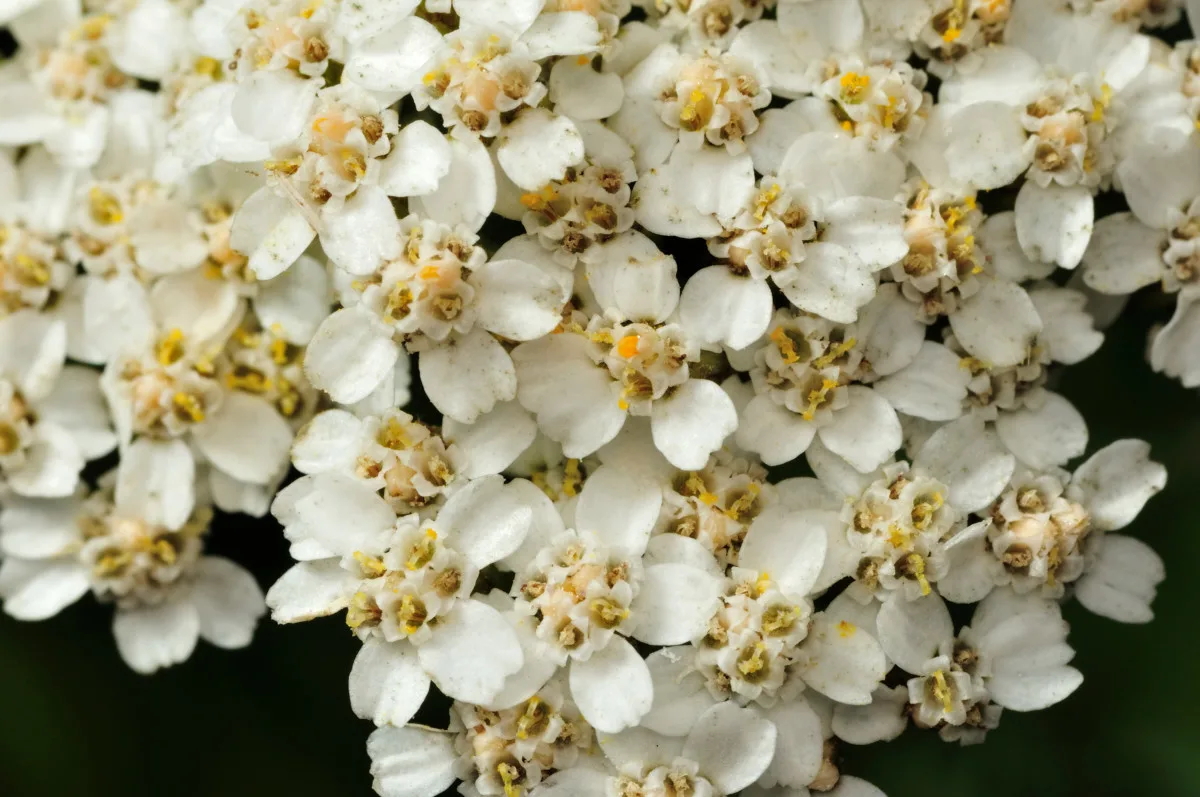
4. Clear Up Contaminated Sites
One more interesting feature of yarrow, with its capacity to dynamically accumulate metallic elements such as copper, is that it can also accumulate lead and other such toxins from the soil. Plants that accumulate copper can also concentrate lead that has contaminated the surrounding area.
If a soil test has determined that lead contamination is an issue on a site (for example, from around old houses where lead paint has been used) then yarrow can help clean up the area. The yarrow concentrates the lead, and plants (including their roots) are dug up at the end of the season. These plants are then disposed of.
Of course, if yarrow is used to clean up a site, it cannot then be used subsequently for mulch, liquid feeds, or other uses around your homestead mentioned below. The lead-contaminated plants must be disposed of responsibly.
5. Break Up Compacted Soil and Reduce Soil Erosion
Yarrow can be beneficial for the soil on a site in a range of different ways. Its deep and fibrous roots not only effectively gather nutrients; they can also help break up compacted soil or reduce the erosion of light and friable soils. For these reasons, they can be very beneficial plants in the formation of new garden sites, or in the reclamation of degraded land.
6. Yarrow Attracts Pollinators
Good news for pollinators and people is that yarrow attracts a wide range of pollinators. The flowers attract and provide sustenance for a wide range of insects. The white flowers are particularly popular with bees and many other pollinators that are necessary for gardeners and growth.
Planting yarrow is one great way to make sure there are plenty of pollinators in your garden. They may be drawn in by the yarrow, but will stay to pollinate many of your other main edible crops.
7. And Other Beneficial Insects
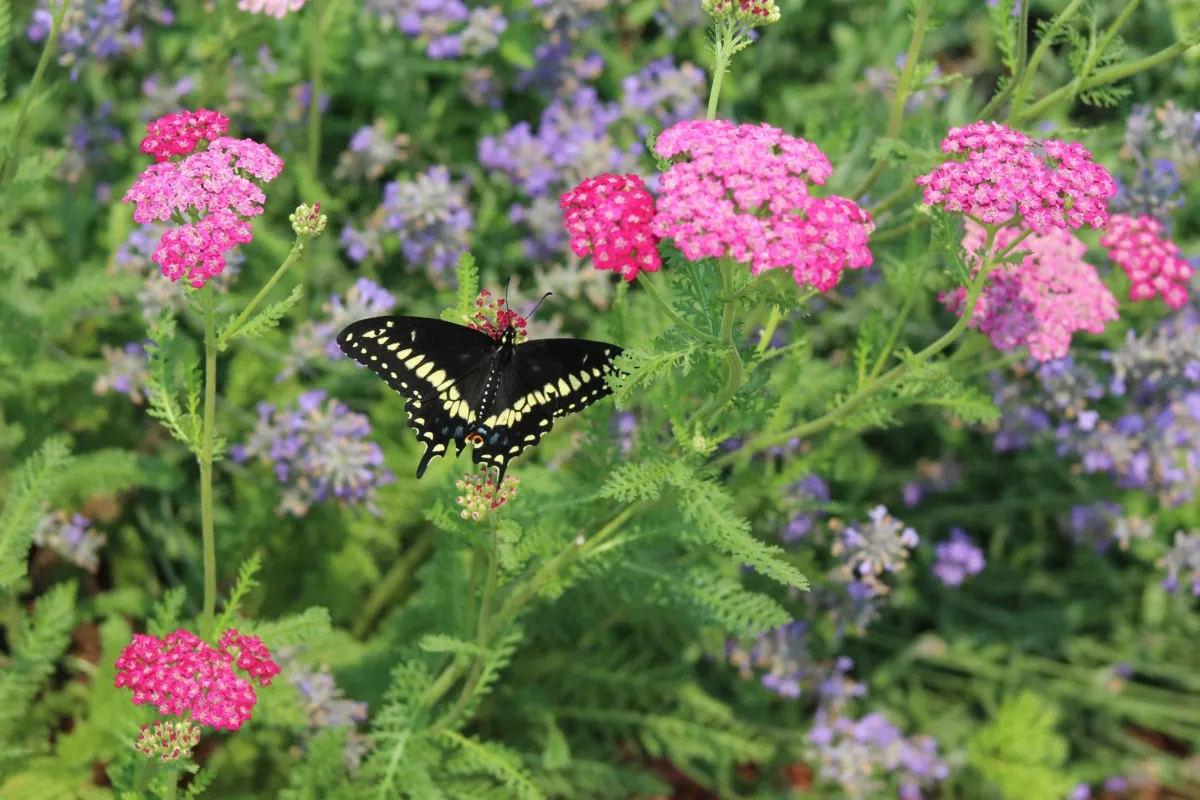
There are plenty of other reasons why we want a wide range of insects and other wildlife in our gardens. In addition to requiring insects for pollination, organic gardeners also need them to keep the ecosystem in balance. The more biodiversity there is in a garden, the more stable and resilient it will be.
Many insects are beneficial in the garden not only because they add to the general biodiversity but also because they are predatory – and eat many of the insects gardeners consider to be pests.
Yarrow’s foremost advantage to the organic gardener, perhaps, is that it can attract a wealth of such beneficial predatory insects. For example, it attractions lacewings, parasitoid wasps, ladybugs, ground beetles and hover flies.
It also provides food, habitat or refuge for other beneficial wildlife, including spiders, which can also help to keep the ecosystem in balance.
Yarrow is also a great choice for butterfly gardens and will add to the visual amenity of your garden by making sure it’s graced by a range of different moths and butterflies.
8. It May Also Repel, Confuse or Distract a Range of Pest Species
While the evidence is largely anecdotal, yarrow is also said to repel, confuse or distract a range of common pest species. Many believe that the pungent odor of yarrow will repel pests that would otherwise plague plants grown nearby.
Yarrow may also work as a deterrent for insect pests that plague humans too. It has long enjoyed use as a natural repellent for species of tick, fleas and mosquitoes. And while it may not be 100% effective, it may work at least as a partial deterrent to discourage certain species in certain parts of your property.
9. It Also Boosts Essential Oils in Plants Grown Nearby, Making them Better at Repelling Pests
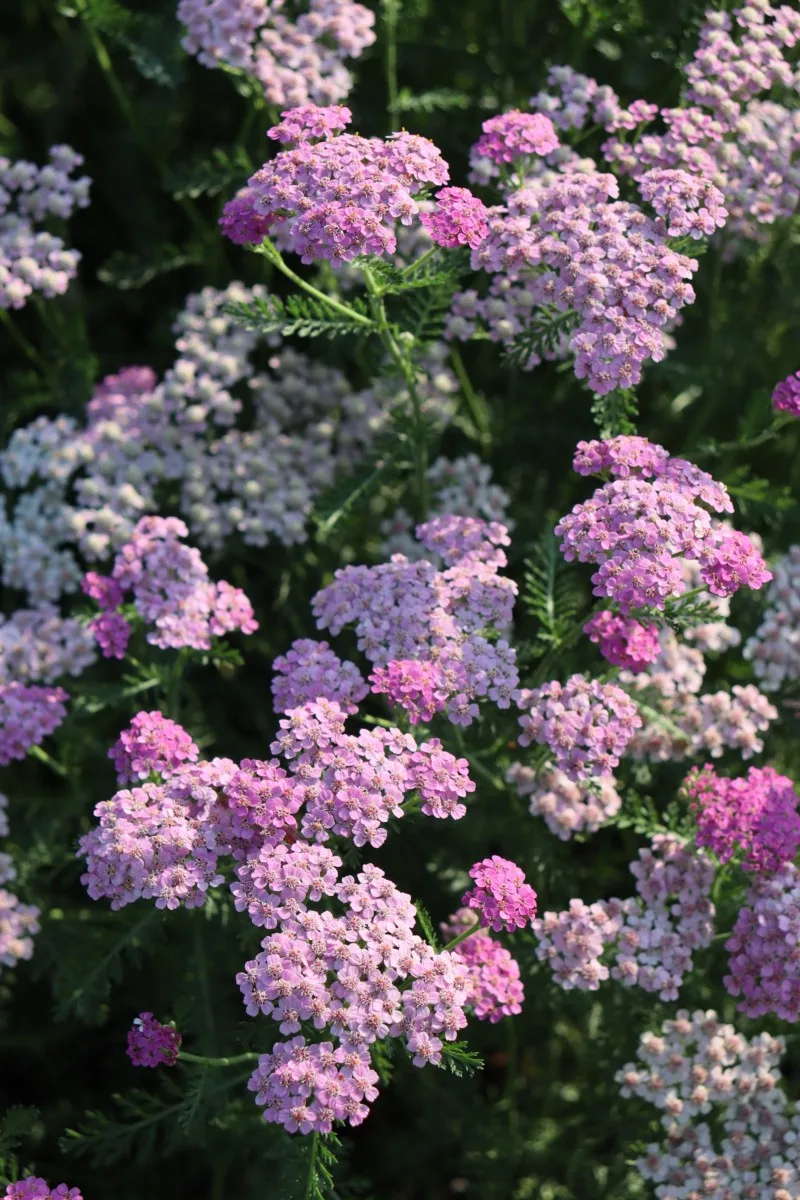
Another interesting thing about yarrow is that it may boost the essential oil production of other repellent plants grown nearby. Boosting essential oil production may, of course, be beneficial for those who are growing aromatic herbs for culinary or medicinal use. But it may also help to make such plants better at repelling certain pest species.
10. It’s a Great Low Maintenance Plant
Yarrow can be grown in a wide range of different settings. It can grow in a wide range of different soil types, with a broad pH range. It will do well in well-drained soil, and can be grown even in near-drought conditions in nutritionally poor soils – even in very alkaline conditions. This means that it can be the right plant for the right place in many different gardens around the globe. And is a great choice for those who want to create a low maintenance garden.
In forest gardens and fruit tree guilds, yarrow is a useful plant that will require little to no upkeep over time. As it can cope both in full sun conditions and in semi-shade/ light woodland shade, it can be great for forest gardening and agroforestry applications. Left more or less to its own thing, it will continue to provide the benefits mentioned above for years to come.
11. And Can Also Be Used As Ground Cover (Mowed a couple of times a year.)
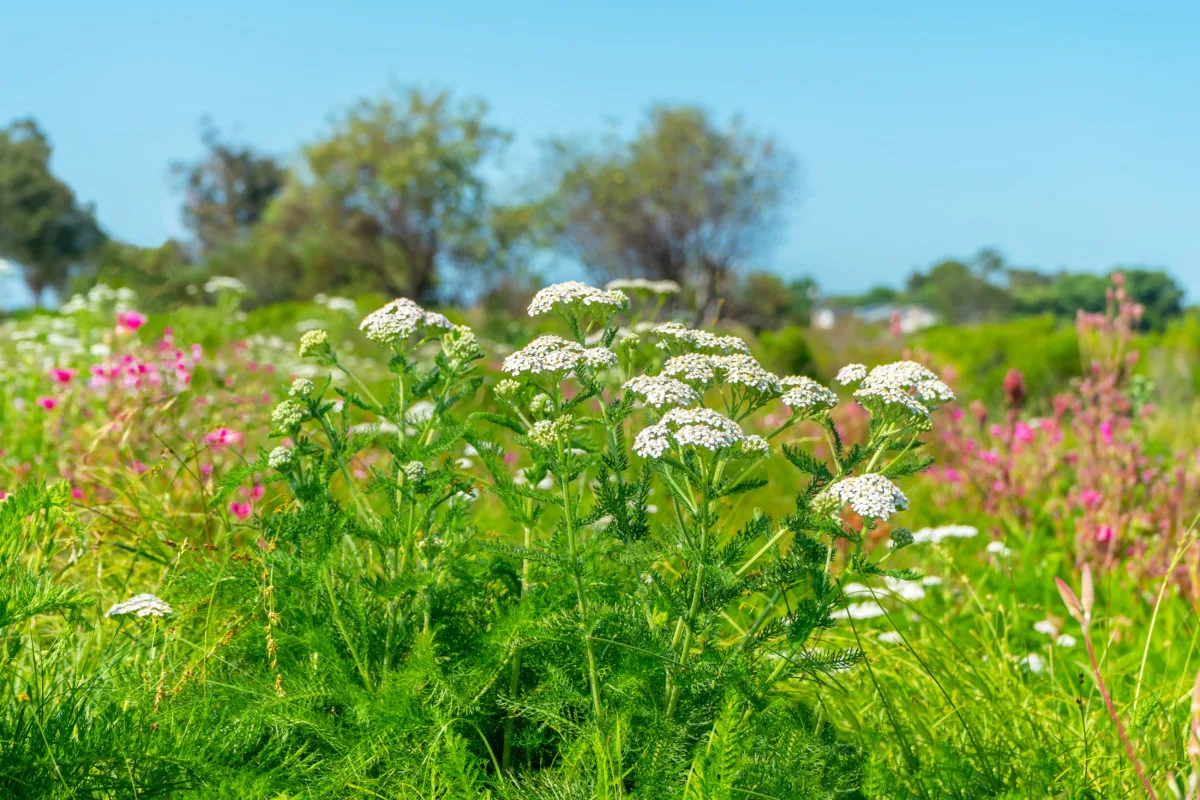
Another option is to use yarrow in a somewhat more managed way. It’s often used, for example, as a mixed ground cover in an establishing forest garden.
A mix of yarrow, clovers, fennel, and annual rye, for example, can be used to create a cover crop for the ground cover layer in a forest garden, which is mowed a couple of times a year. This ground cover protects the soil, builds fertility, mines minerals and attracts beneficial wildlife until trees have matured to provide more shade.
12. Several Birds Use Yarrow in their Nests To Inhibit the Growth of Parasites
Another interesting thing about yarrow is that it’s not only beneficial to smaller creatures in your garden. It can also be beneficial for a number of nesting birds. Several birds, such as the common starling, for example, use yarrow to line their nests. Studies have suggested that they do so to inhibit the growth of parasites.
13. Yarrow is an Important Herbal Medicine
The benefits of growing yarrow do not end in the garden. Yarrow also has many uses for us above and beyond its ecological benefits. First and foremost among its uses – yarrow has long been considered to be one of the most important and useful herbal medicines in our arsenal.
According to ancient Greek mythology, the warrior Achilles used yarrow to heal his wounds faster when injured in battle. (Hence the plant’s botanical name.) Yarrow is still used as a top remedy to staunch blood flow. Many of its local ‘nicknames’ refer to this property – ‘bloodwort’, ‘staunchgrass’ and ‘nosebleed’, for example.
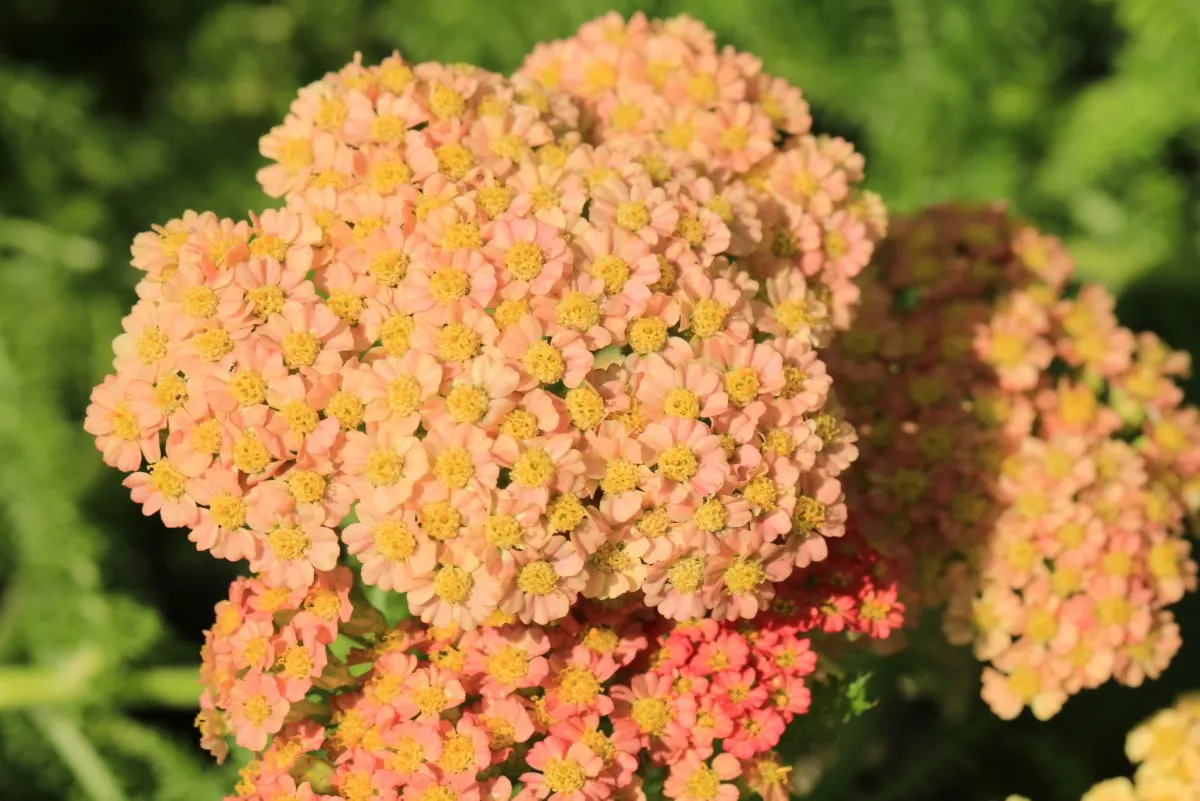
But staunching blood flow is not the only medicinal application for yarrow. Yarrow is also said to:
- Help fight bacteria and viruses.
- Promote digestion and detoxification.
- Relieve cramps and menstrual pain.
- Aid in the treatment of certain skin conditions.
- Have anti-inflammatory properties to relieve pain from inflammatory conditions.
- Act as a vasodilator and help to reduce blood pressure and treat blood system related issues.
Yarrow is frequently used in herbal medicine, both internally and externally. However, there are certain minor health risks associated with long-term use. And yarrow should be avoided by pregnant women and nursing mothers, and by anyone with an allergy to members of the aster family. If you plan on using herbal remedies, it is always best to consult a medical expert in these matters.
14. It Can Also Be an Edible Plant (In Small Quantities)
While yarrow is best known as a medicinal plant, it does also have a number of general edible uses. The leaves have a rather bitter flavor, but can be used in moderation in mixed salads. They are especially palatable while very young. Yarrow leaves can also be used in moderation as a potherb, in soups and egg dishes, for example. Light cooking is best as heating for too long can impart a bitter flavor.
We’ll explore some edible ways to use yarrow in your kitchen a little later in this article.
15. It Can Be Used in Cosmetic Applications, Crafts and Decoration
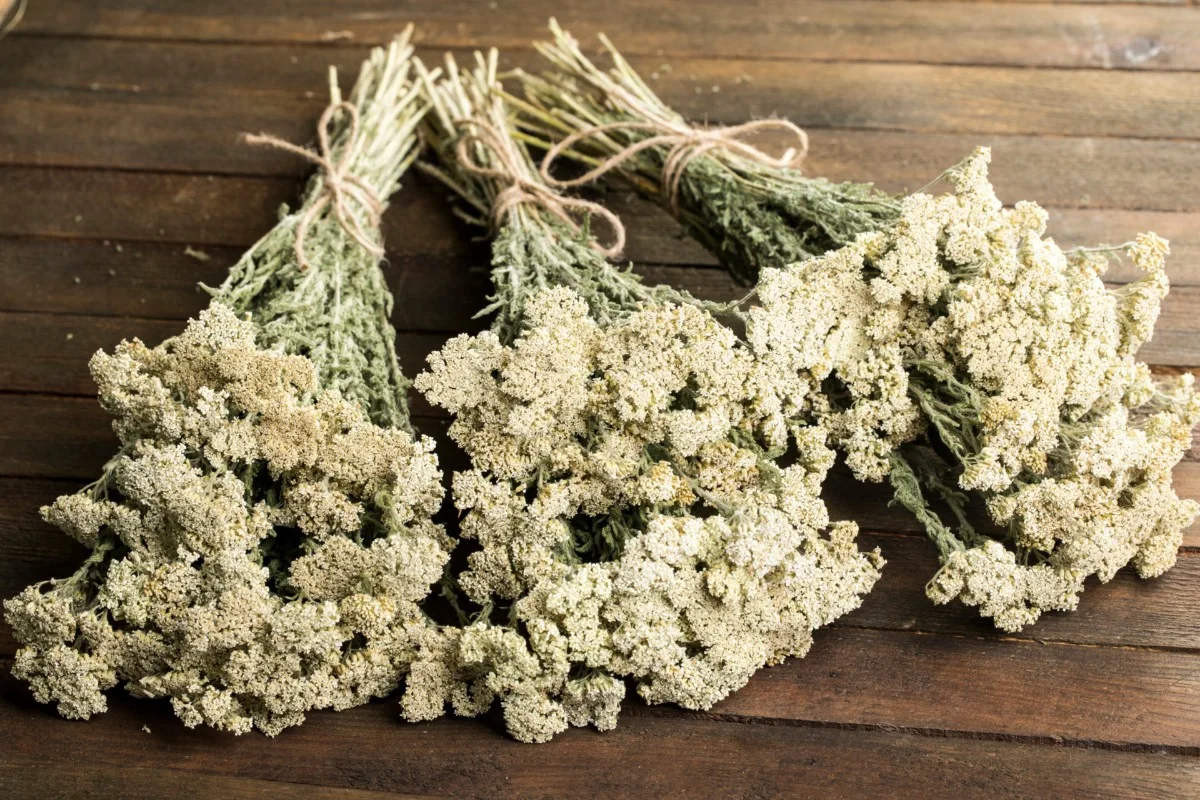
Finally, in addition to its medicinal and culinary uses, yarrow can also be used around your homestead in a range of other ways. For example, it can be used:
- In shampoos. (Yarrow is said to stimulate hair growth, and may help curb excessive hair loss.)
- In skincare products. (Yarrow not only soothes skin conditions, but may also help cosmetically speaking. A study published in 2011 found that yarrow extract significantly improved the appearance of wrinkles and pores compared to a placebo.
- As fresh or dried flower arrangements to decorate your home.
How To Use Yarrow
By now you should have no doubt that growing yarrow is a good idea. But exactly where should you grow yarrow? And how should you use it around your homestead? You’ll find some suggestions, tips and ideas below:
Using Yarrow in Your Garden as a Companion Plant
Above, you read about many of the reasons why yarrow can be such a good companion plant. It can work well:
- In forest gardens or fruit tree guilds.
- Around and amongst fruiting bushes and canes.
- Round plants that require pollination in your annual fruit and vegetable garden.
- In a dedicated herb garden or around other aromatic herbs.
- As part of a wildflower lawn or ground cover.
Yarrow is said to be a particularly good companion plant for:
- All fruiting trees, shrubs and canes.
- All annual fruits and vegetables which require pollination (and pest control).
- Aromatic herbs like lavender, rosemary, thyme, oregano, basil etc..
Using Yarrow Around Your Homestead
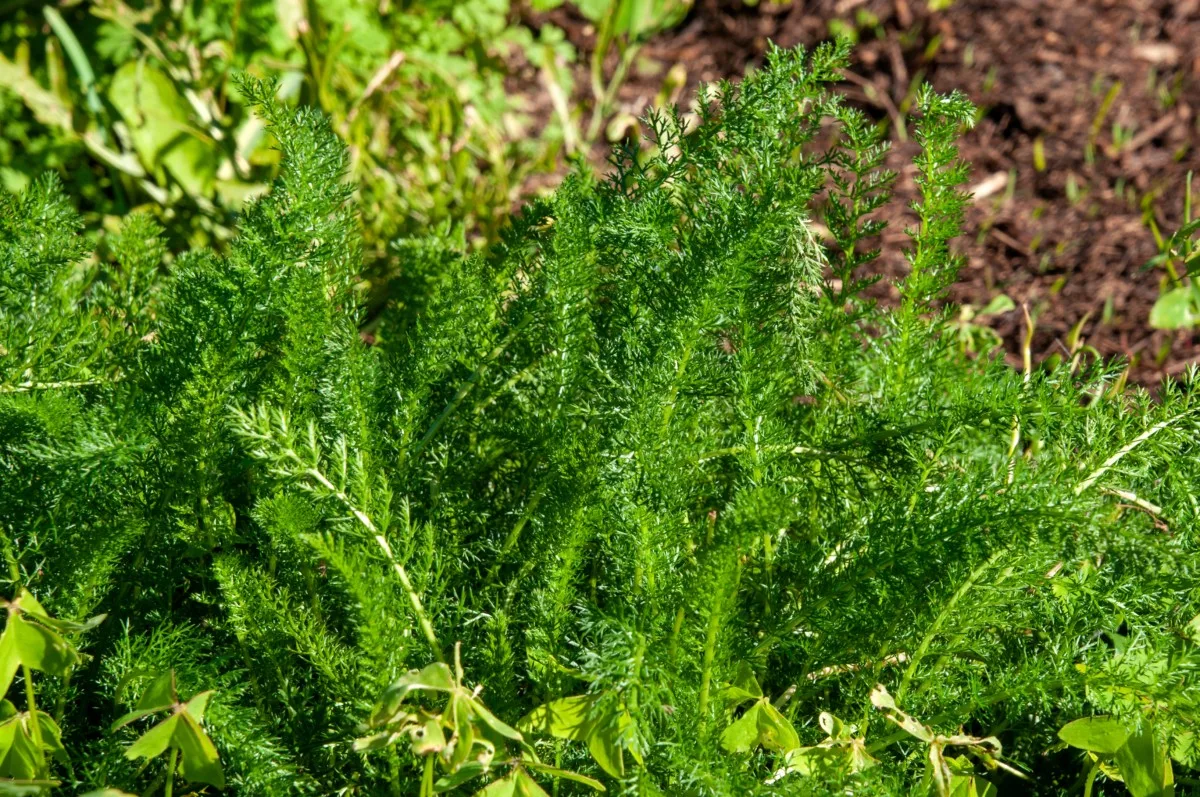
Yarrow leaves, as mentioned above, have a range of medicinal uses, and are edible in small quantities.
The leaves and the flowers can also be made into an aromatic tea.
To make yarrow tea:
- Take 1tsp dried yarrow leaves or 2 pieces fresh, large yarrow leaves.
- Add to 1 cup of boiling water.
- Strain out the leaves.
- Add a slice of lemon, and (optional) raw honey to taste, then drink.
Other recipes include:
Yarrow Salad With Breadcrumbs @ eatsmarter.com.
Spring Herb Egg Frittata @ vibrantplate.com.
Penne Aglio Olio With Yarrow @ foragerchef.com.
Yarrow Gravlax – Cooking With Yarrow @ foragerchef.com.
Goat Milk Sorbet With Currants, Yarrow and Black Walnuts @ foragerchef.com.
Yarrow leaves are also used as a substitute for hops in flavoring and preservation for home-brewed beers.
Honey Lemon Yarrow Summer Beer @ storey.com.
As mentioned above, yarrow can also be used in a range of non-culinary ways. For example, to make soap:
Wild Rose and Yarrow Soap @ growforagecookferment.com.
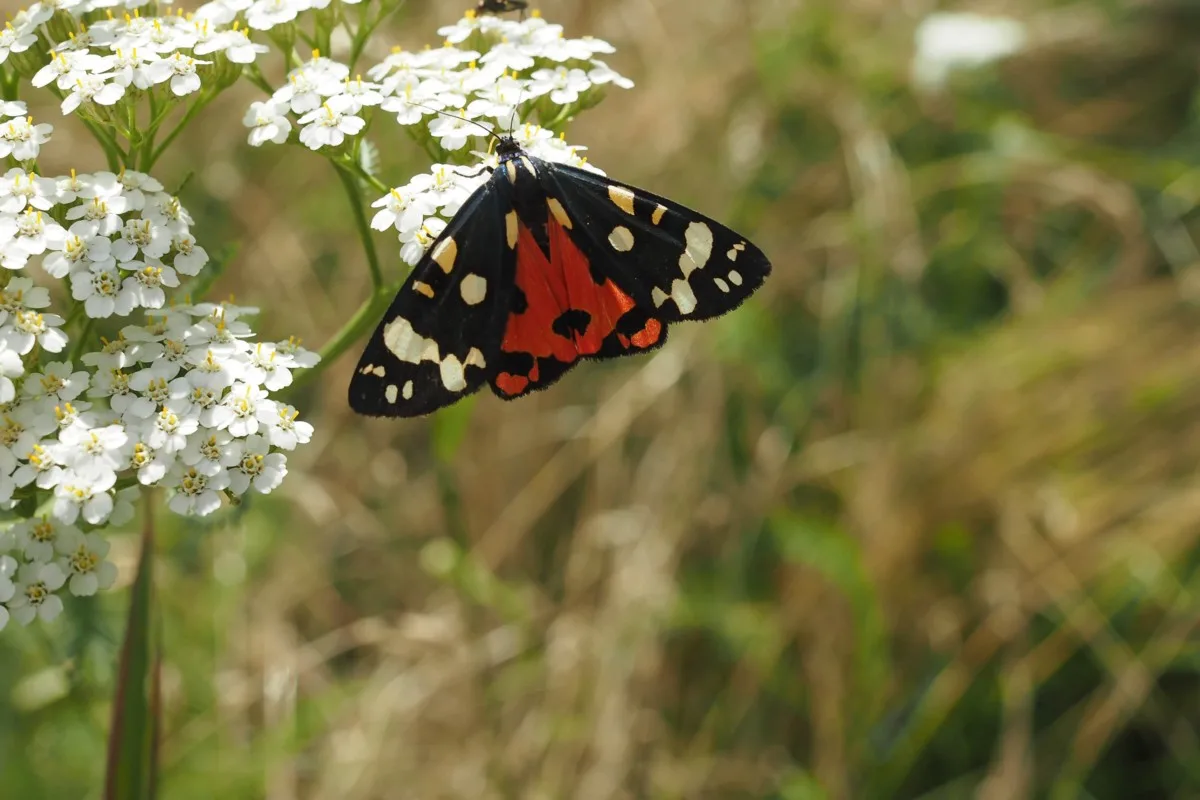
And these are just some of the many ways yarrow can come in handy around your garden and your home. So consider giving yarrow some space to grow wherever you live.

Get the famous Rural Sprout newsletter delivered to your inbox.
Including Sunday musings from our editor, Tracey, as well as “What’s Up Wednesday” our roundup of what’s in season and new article updates and alerts.

